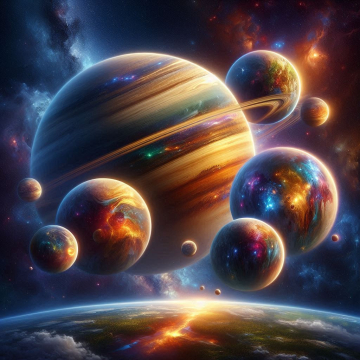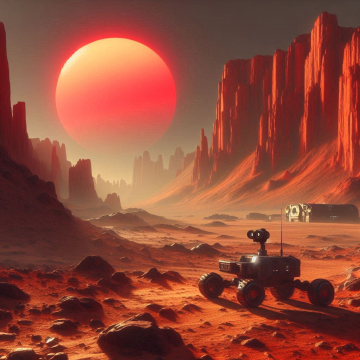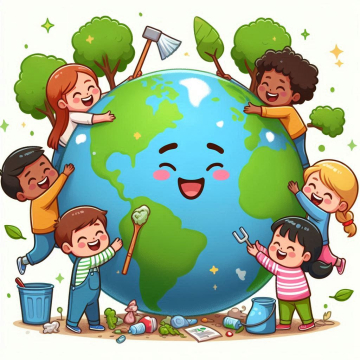The Moon, our closest natural satellite, has been an object of fascination and study since time immemorial. As science has advanced, various disciplines have embarked on the task of unraveling the mysteries of the Moon and understanding its role in the solar system and on Earth. In this article, we will dive into the areas of science that study the Moon, exploring everything from lunar geology to astrophysics and astrobiology.
Lunar geology: Unraveling the secrets of its surface.
Lunar geology is one of the fundamental areas for understanding the Moon. Geological studies of the Moon began with NASA's Apollo missions, which brought back samples of the lunar surface. These studies revealed that the Moon has a rich and complex geological history, with features including craters, lava seas, mountains and regolith. Lunar geologists analyze these features to obtain information about the formation and evolution of the Moon over time.
Cosmochemistry: Tracking the lunar elements.
Cosmochemistry focuses on the study of chemical elements and compounds in space. In the case of the Moon, cosmochemists analyze the compositions of lunar rocks and regolith to understand the abundance and distribution of elements on the lunar surface. This provides clues about the formation of the solar system and the early history of the Moon.
Astrophysics: Observing the moon from Earth and space.
Lunar astrophysics involves the study of the Moon from a broader perspective in the field of astrophysics. Ground-based telescopes and orbiting satellites are used to observe the Moon and study phenomena such as lunar phases, eclipses, and variations in its brightness. The Moon has also become a key object of study in the search for exoplanets and the understanding of planetary systems.
Lunar seismology: Detecting tremors on the moon.
During the Apollo missions, seismometers were installed on the Moon to measure seismic activity. These instruments allowed scientists to study the internal structure of the Moon by analyzing seismic waves generated by meteoroid impacts and other events. Although the Apollo missions have concluded, recent missions, such as China's Chang'e-4, have revived interest in lunar seismology.
Planetary sciences: Comparing the moon to other celestial bodies.
Planetary sciences focus on the study of bodies in the solar system, and the Moon is a crucial object in this field. Comparing the Moon to other celestial bodies, such as planets and moons of other planets, provides valuable insights into the diversity and evolution of bodies in our cosmic neighborhood. Additionally, the study of craters and geological features on the Moon helps better understand the impact of catastrophic events on the history of the solar system.
In-Situ lunar research: Robotic and human missions.
In situ lunar exploration involves sending robotic probes and human missions to directly study the Moon. Missions such as China's Chang'e series, India's Lunar Program and future missions planned by NASA and other space agencies are intended to collect data about the Moon from its surface. These missions contribute significantly to research on lunar composition, geology and topography.
Astrobiology: Searching for traces of past or present life.
Although the Moon is generally considered an inhospitable environment for life as we know it, astrobiology seeks to understand the possibility of life in other parts of the solar system, including the Moon. Scientists are studying the possibility of water in the form of ice at the lunar poles and evaluating whether there could be traces of past or present life on the Moon.
Materials science: Developing technologies for lunar exploration.
Materials science plays an essential role in lunar exploration by developing technologies and materials suitable for space missions. This includes designing spacesuits, lunar rovers, and structures that can withstand the Moon's extreme conditions, such as extreme temperatures and regolith particles.
Deep space science: Using the moon as an observation platform.
The Moon also serves as an observation platform for deep space science. Telescopes and observatories placed on the Moon, far from Earth's atmosphere, can provide clearer and more detailed views of the universe, allowing the observation of distant celestial objects and cosmic phenomena.
Citizen science and education: Engaging the community in lunar research.
Citizen science and education play a vital role in engaging the community in lunar research. Citizen science projects, such as classifying lunar images or identifying features on the lunar surface, allow people around the world to contribute to lunar exploration. Additionally, space science education inspires future generations to explore and understand our cosmic neighborhood.
Exploration of the Moon spans a wide range of scientific disciplines, from geology and astrophysics to astrobiology and deep space science. Each area of research contributes uniquely to our understanding of the Moon, its history, and its impact on the solar system. With future missions and scientific advances, the scientific mosaic of lunar exploration will continue to expand, offering new perspectives and unraveling the still hidden secrets of our natural satellite.






